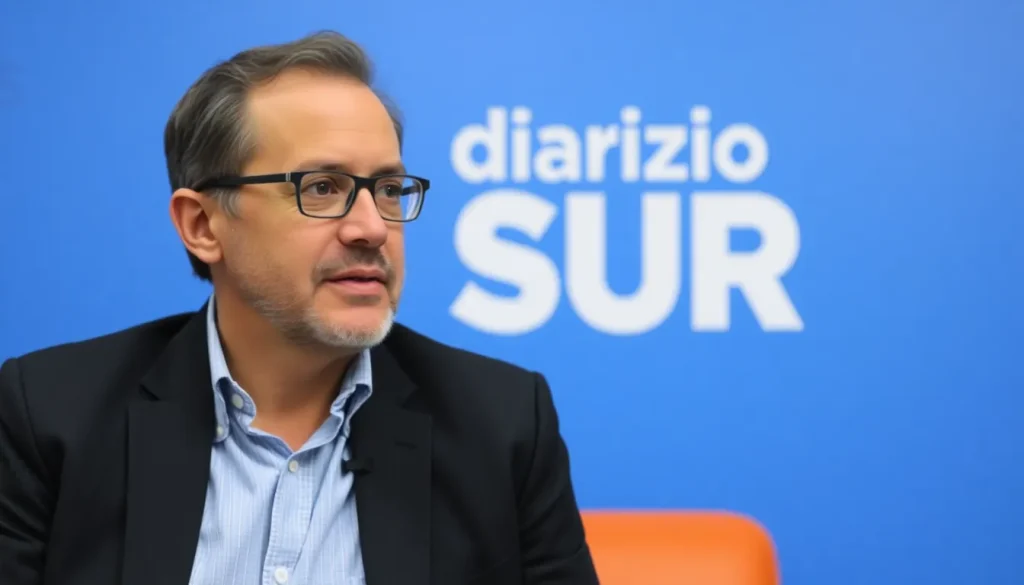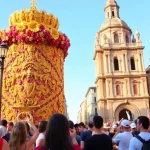Interview with Manuel Castillo, Journalist and Director of Diario SUR

Interview with Manuel Castillo, journalist and director of Diario SUR in Málaga.
For Manuel Castillo, the internet serves as a vast workshop filled with tools for crafting quality journalism. But what exactly does "quality" journalism mean? We unpack this throughout the following interview, which reveals that the internet is also a showcase and an ideal way to reach a wider audience.
- Understanding the Role of Internet and Social Media in Journalism
- The Future of Journalism: Beyond Digital Platforms
- Maximizing the Potential of the Internet for Journalists
- Differences Between Online and Print Journalism
- Transitioning from Print to Digital: The Case of Diario SUR
- Rationale Behind the Change at Diario SUR
- Bridging the Digital Divide Among Journalists
- Changing Perceptions of Digital Journalism
- Utilizing Social Media as a Journalist
- Benefits of Social Media for Journalistic Work
– Manuel, how do you think the internet and social media have changed the way journalism is practiced?
– The transformation has been profound. While the core principles and values of journalism remain constant, the tools we have at our disposal have expanded significantly. Today, we can interact more effectively with our sources and, importantly, with our readers.
The Future of Journalism: Beyond Digital Platforms
– Given the challenges the profession faces today, do you believe that the internet is the future of journalism?
– Not necessarily. The future lies in producing quality journalism, irrespective of the medium. There are exceptional works being done across newspapers, television, radio, and of course, the internet. What the internet does is eliminate industrial barriers. Now, anyone with the right passion and talent can create and showcase quality journalism.
However, it's clear that the consumption of information is evolving rapidly in this digital age. We must be agile and flexible to adapt to new demands, platforms, and modes of communication.
Maximizing the Potential of the Internet for Journalists
– How can journalists take advantage of the internet?
– There are numerous ways to harness the internet's potential. I see it as a vast workshop with various tools for building quality journalism. The key benefits include:
- Access to a larger audience.
- Immediate access to information and databases.
- Enhanced interaction with sources and readers.
Differences Between Online and Print Journalism
– Is writing for online platforms different from writing for print? Where do the differences lie?
– That distinction has become less relevant. A well-written piece resonates whether it’s in print or online, regardless of its length or tone. There are websites showcasing both short and long articles. However, it’s true that online consumption tends to be more diverse. Some users seek quick news with rich audiovisual support, which is understandable given that the internet encompasses elements from various media.
Transitioning from Print to Digital: The Case of Diario SUR
– At Diario SUR, you are undergoing an ambitious transformation to stop merely transferring content from print to the web. Why was this approach taken until now?
– This was largely due to resource constraints. Nearly two decades ago, print newspapers entered the digital realm believing that simply transferring their traditional strengths online would suffice. They anticipated a swift migration of advertising dollars from print to digital. This mindset was prevalent from large players like the New York Times to the smallest local papers.
However, the reality has proven more complex and challenging than expected. Many traditional newspapers have struggled to find a sustainable model, and we are still in search of the optimal approach.
Rationale Behind the Change at Diario SUR
– What has driven the need for this change? What will the new SUR website look like?
– Common sense motivates us. We want to be proactive in finding a viable model. Our editorial team is sufficiently mature to tackle this challenge. Additionally, we feel uncomfortable charging for information in print while offering it for free online.
Regarding the new website, we believe it will significantly improve our platform. We aim to create a more localized online presence, identifying content niches within our local community. Our objective is to inform, entertain, and discover. Think of the website as the tapas bar compared to the main restaurant; both offer quality products, but in different formats.
Bridging the Digital Divide Among Journalists
– One of the major challenges in newsrooms is the reluctance of print journalists to embrace the online world and utilize 2.0 elements. How do you address this "digital divide"?
– Today, that resistance has diminished considerably. While gaps in training persist, the Vocento Regional Media team has invested heavily in training initiatives over the years. The ongoing crisis reminds us that the divide between "print" journalists and their "digital" counterparts is a relic of the past. We aspire to produce quality journalism while fostering community engagement. A good journalist adapts quickly to the digital landscape, regardless of age—what matters is enthusiasm and talent.
Changing Perceptions of Digital Journalism
– Why do you think digital journalists have historically been viewed as of "lesser category" compared to those writing for print, both by readers and their peers?
This perception stemmed largely from economic factors. Digital roles often attracted younger, less experienced journalists, who were typically paid less. Furthermore, print media still holds a certain allure that digital platforms have yet to match. However, the lines are blurring quickly, and I have no doubt that the distinction between print and digital journalists is fading.
– As an active Twitter user, how do you leverage social media? Who do you follow on Twitter?
– I use Twitter to stay informed about current events and to identify trending topics. I follow individuals whom I believe are well-informed and influential in their respective circles. I also share works from Diario SUR along with other content that I find interesting or valuable.
– How do social media platforms aid you in your work?
– They help me stay informed about what is happening and, importantly, what might happen in the near future.




Leave a Reply